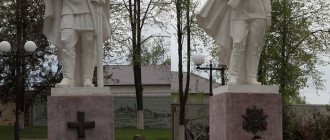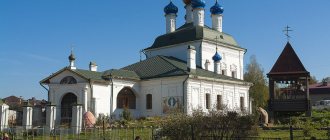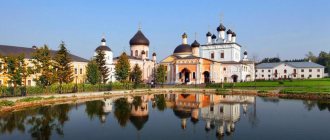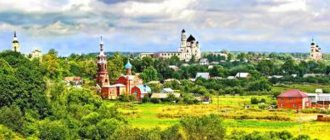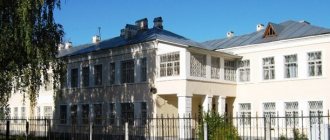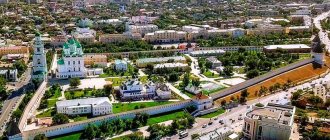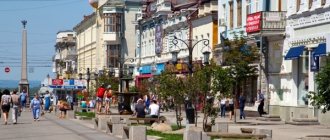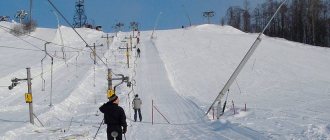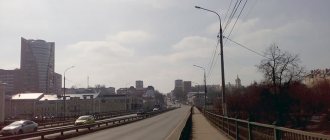Vitebsk: history of the city
Vitebsk is one of the oldest cities in Belarus. It was founded by Princess Olga in 974, but the first mention of the city in chronicles appeared in 1021. Its favorable location on 3 rivers (Western Dvina, its tributary Vitba and Luches) influenced the rapid development of various crafts, industries, trade and led to population growth. By the way, the name of the city comes from the Vitba River. At the end of the 12th century, Vitebsk, under the control of the Polotsk princes, developed into a full-fledged trading city. During this period, they began to build the first church made of stone - the Holy Annunciation.
In the 16th century, the city became the center of the Polish-Lithuanian Commonwealth, since the last Slavic prince gave his daughter in marriage to the son of the Grand Duke of Lithuania Gedemin. After this, this area often became a springboard for military operations. In the 17th century, the Jesuits came to Vitebsk and built their own churches and schools. Orthodoxy was prohibited until the end of the 18th century, when the city became part of the Russian Empire as a result of the division of the Polish-Lithuanian Commonwealth.
In the 20th century, the development of Vitebsk accelerated, it became a cultural and creative center, as well as a place of active artistic life. Here M. Chagall opened the People's Art School, which graduated many famous artists of various directions, for example, K. Malevich and Yu. Peng. In addition, the Theater of Revolutionary Satire and the People's Conservatory were opened in Vitebsk.
Vitebsk at the beginning of the twentieth century
In 1924, Vitebsk became part of the BSSR, and in 1938 it became a large regional center, where over 200 enterprises operated.
The city suffered greatly during the Great Patriotic War: 90% of the buildings were destroyed, most of the residents were shot by the Nazis or taken to concentration camps and hard labor. But after the war, Vitebsk was rebuilt again, and the remaining architectural monuments were restored. Currently, it is one of the largest industrial centers in Belarus and has a population of 369 thousand people.
Weekend trip: 6 interesting places near Vitebsk
If Vitebsk has already been explored far and wide, it’s time to look for interesting things in the surrounding area. We have collected as many as 6 options for busy outings near the city, where there are parks, lakes, historical estates, and many other reasons not to sit at home. And if you go by car, traveling to these places will also be contactless - what is needed in these times.
Devil's Beard
Distance from Vitebsk: 2 km. How to get there: bus No. 1; minibuses No. 99, No. 1, No. 59, No. 95, No. 113; from the station minibus No. 24; tram number 6.
Devil's Beard is a botanical reserve of local importance in the tract of the same name. Few people know about this place for quiet walks, because the path to it is quite thorny. You can only come here through the fields or from a neighboring village - and the road nearby was paved only recently.
The reserve was created in 1980 to protect rare plants. On an area of 58.3 hectares, everything grows: you will see majestic oaks, pine trees, spruce trees, linden trees, and ash trees. Among the plants listed in the Red Book, there are coppice, spring primrose, peach-leaved bell, broad-leaved bell, and foxglove.
The name “Devil's Beard” has its own legend: since ancient times, a steep and steep cape has risen above the Dvina, which makes a turn here. From it, the entire district, the forests on the opposite left bank and the winding ribbon of the river were visible in the distance. There was no better place for robbers waiting for merchants on passing ships. In addition, the place is dangerous due to its strong current - deep pools are adjacent to shallows and stone ridges in the middle of the river. In general, it’s still a “damn” place.
Unfortunately, the reserve has not reached our time in its original form. During World War II, oak groves and centuries-old trees were cut down here. The shore has crumbled, changed, deep pools have begun to swim, and the cape no longer protrudes as before. But at the end of the 20th century, the reserve was restored: young trees were planted here, and now a man-made forest grows in the place of the old one. But as before, a picturesque panorama opens up from a very high bank. True, not to dense forests, as in ancient times, but to the surrounding landscapes and Vitebsk. And it is beautiful at all times of the year, but especially during the golden autumn.
If you are looking for other similar places in the vicinity of Vitebsk, then a similar deciduous forest can be found along the banks of the Dvina near the village of Bibirevka - this is 2 km from Ulanovichi to Podberezye. Norway maple, pedunculate oak, small-leaved linden and even elm grow there. The banks are no lower, but the streams flowing into the river will be higher. Here you can also see many plants listed in the Red Book of Belarus.
Arboretum in Luzhesno
Distance from the center of Vitebsk: 12 km. How to get there: bus number 14; minibuses No. 55, No. 56, No. 76; train Vitebsk - Ezerishche to the Luzhesno stop.
Luzhesno is a small village 12 km from Vitebsk. Luzhesno was first mentioned in documentary sources in 1579 - the place is marked on the map of Polotsk and Vitebsk voivodeships.
Between the railway station and the village there is the “Warm Forest” tract , in which you can wander for an hour or two. But here we are interested in the Luzhesnyansky Arboretum - a botanical natural monument in Belarus, located on the territory of the Luzhesnyansky Agrarian College.
The arboretum was founded in 1974 on the initiative of teacher Nikolai Rozhkov, who collected a rich collection of various plants here. The Luzhesnyansky arboretum occupies an area of 8.8 hectares in the interfluve of the Western Dvina and the mouth of the right bank of the Luzhesnyanka River.
At the beginning of 1997, there were more than 250 species of trees and shrubs and 32 species of flowering perennial plants, including those that are in the Red Book: for example, fir and Amur velvet. In the arboretum you will see mainly local plants and trees: birch, small-leaved linden, maple, gray alder, common elm, various types of jasmine. Beech also grows here, which is not found in Belarus now, although it was common in the Middle Ages. This is also the northernmost planting of white mulberry in the country.
In addition to the arboretum, the Church of the Assumption of the Blessed Virgin Mary is also located in Luzhesno . The Orthodox Church is an architectural monument of the retrospective Russian style. It was built in 1908 from brick on the outskirts of the village on the right bank of the Western Dvina. In the architecture of the temple you will see many elements of ancient Russian architecture.
Perhaps the main symbol of Luzhesno is the building of the former agricultural school. The Art Nouveau building was built in the second half of the 19th century. Nowadays the building of the agricultural college is located within its walls.
Another interesting place is the Old Believer cemetery of the former village. And if you walk 500 m south of Luzhesno, you will see an archaeological site: a fortified settlement and a settlement. The settlement dates back to the early Iron Age!
Quarries in Roubaix and estate in Zdravnevo
Distance from Vitebsk: 16 km. How to get there: bus No. 26 to Ruba, and then No. 26A to the Zdravnevo stop; minibuses No. 26B, No. 26A from the station or No. 42, No. 102, No. 32 from the amphitheater.
Perhaps the most cinematic place near Vitebsk is the dolomite quarries, the sight of which will take your breath away.
In 1931, a lime factory was founded near Ruba, around which a factory village grew. OJSC Dolomite is still operating, and the village also exists. Some of the quarries have already been mined out and flooded, and the largest active dolomite development site is the Gralevo deposit in Ruba. The quarry has been growing since the 70s of the last century. Having several interconnected sections, it stretches for 2.5 kilometers. And its depth in some places reaches 45 meters.
One of the banks of Gralevo is accessible to the public: mining on the southern side of the quarry is no longer underway, and if you walk across the field, you’ll be able to take a look here. This, as with any similar object, should be done as carefully as possible.
The picture that opens when looking at the quarry cannot but fascinate. Here you get the feeling of being in the mountains, and it also seems as if you are in an Arizona canyon.
Not far from Ruba, in the village of Koytovo, there is the Zdravnevo estate museum, where the artist Ilya Repin lived. This is a calm and beautiful place at any time of the year. You can get here from the station by bus 26A or just walk from Ruba.
Repin bought the Zdravnevo estate after the successful sale of the painting “Cossacks writing a letter to the Turkish Sultan.” A smaller copy of it is now in the estate house, and a full-size copy can be seen at the Vitebsk railway station. The artist came to the estate for the summer season, and the house was completed and renovated according to his sketches. At the same time, alleys and an orchard were planted here - they can still be seen. In this house the master created about 40 works, including “Autumn Bouquet”, “Hunter”, “Belarusian”, “On the Western Dvina” and others.
The entire museum complex consists of a restored main manor house, a manager's house with office space and an exhibition hall, and a restored cellar. In the exhibition you will see things from the life of the Repin family, furniture from the late 19th – early 20th centuries, and local archaeological finds. You can see the house from the inside, and also go up to the observation deck.
Big and Small Lettsy
Distance from Vitebsk: 11 km. How to get there: train Vitebsk - Polotsk to Malye Lettsy station; minibus Vitebsk - Staroe Selo.
The village of Malye Lettsy is famous for the fact that there are two famous sanatoriums and mineral water springs here. Here you can walk through the surrounding natural beauty, breathe in the clean pine air and catch some zen with the fishermen by the lake.
They separated Big and Small Lettsy when they laid the railway. It turned out that the Small Flyers are larger in size than the Large Flyers. They are located at a distance of 4 km from each other, which can easily be covered on foot.
In Bolshie Lettsy you can walk along the picturesque hills. And a section of the old cobblestone road to Polotsk will lead you to the estate of the botanist Adamov.
Here the scientist founded the Botanical Garden, which operated from the very beginning of the 20th century until 1924. At that time, the garden contained about 400 species of rare tree species, a collection of perennial herbaceous plants, a greenhouse with 300 species of exotic plants, a herbarium, more than 2000 species of medicinal, technical, berry and other plants, and a collection of seeds. There was also a botanical museum. Today, only fragments of the botanical garden have survived. But the estate is still alive, and one of the active residents of Vitebsk even tried to restore it.
Also nearby you can find the ancient settlement on the shore of Lake Lettsy.
If you still have the strength and desire to explore the area, you can get to the village of Staroe Selo. There is a rather interesting school museum there, where, among others, there are exhibits telling about the tallest man on earth - a native of these places, Fyodor Makhnov, who had a height of 2 meters 85 centimeters. Just a hundred years ago, Fyodor Makhnov, appearing in public places, caused consternation and shock among those around him. The giant's grave is preserved in the old village cemetery.
Sosnovka
Distance from Vitebsk: 11 km. How to get there: Vitebsk-Orsha train; minibus No. 312 from the bus station.
We recommend going to Sosnovka by bicycle to enjoy the poplar alleys, forests and endless fields. On the way to the main lake in the village itself, you can drive through the forest to see an almost perfectly round wild lake called “Chertovo”. It won’t be easy to get to it - the road lies through a swampy area. Look for the exact location of the lake on the map.
Then leave the forest and head straight to the large lake. You can get to it immediately by train from Vitebsk. A local resident once installed bridges on the lake, which still serve people as a place for fishing and recreation. Don’t forget to take a blanket to sit on the bridge and watch the life of lake ducks. In the summer, by the way, you can swim here.
Obol
Distance from Vitebsk: 60 km by road. How to get there: train Vitebsk - Polotsk.
If you want to rush far away, into the wilderness, you can drive to the village of Obol. The journey will take about an hour by car or 1 hour 40 minutes by train.
Obol is an ancient place with deep roots. It was first mentioned in 1503 as a village in the Polotsk Voivodeship of the Grand Duchy of Lithuania, when it was owned by the Zenoviches. After a while, the Grebnitskys began to own the village. The Grebnitskys were Polish nobles and descended from Yakov Grebnitsky, who moved to Belarus in the 16th century. In addition to Oboli, they owned estates in Orekhovno and Mosar, Ushachi district.
You can come here to see the estate and park complex, which was built in the first half of the 19th century by Stanislav Grebnitsky. The estate in Oboli was mentioned since 1852, and was sold for debts. Under the Grebnitskys, about a hundred people served here, and what was unusual was that the owners had a luxurious carriage with mirrored glass.
At first, the estate building was one-story; the second floor was added later. In addition to the house itself, the estate included outbuildings, outbuildings, a manager's house, a glacier, a stable, and a park. The outbuildings emphasized the front part of the park, located on the river terrace behind the house. Ash trees, birch trees, ornamental bushes grew here, and there was a linden alley. On the second floor of the estate there were living quarters and a dining room, and on the ground floor there was a utility part. The first floor was occupied by a wide vestibule and a front hall with a staircase, rooms for servants and the estate's adviser.
The estate had a large library, which was collected by Edward Grobnitsky. Among the many books was the Statute of the Grand Duchy of Lithuania. Each room had parquet floors made from different types of wood. And one of the rooms was called the canary room, because canaries were bred in it.
Since 1920, the estate housed a school. After the war, the building was given to a boarding school for a ceramic products factory, and in the mid-90s a fire destroyed the interior of the building. Over the past 20 years, the estate has become very dilapidated. The beautiful cast-iron consoles under the balcony and pieces of tile on the wall still remain, but the wrought-iron parapets of the balconies disappeared around 2007.
In addition to the ruins of the Grebnitsky estate, in Obol you can also see the St. Onufrievsky Church, built in 1843.
Photo: @angelika___0_0, @olyarummo
How to get to Vitebsk from Russia?
Citizens of the Russian Federation need only present a passport to cross the Russian-Belarusian border. You can get to Vitebsk from Russia by train, bus and car. There are no air connections between this city and Russia. A bus ticket is the cheapest option, plus it travels faster than a train and will take you to your destination in 8 hours. But you can take a ride and get there inexpensively and comfortably. The fact is that many residents of Vitebsk work in St. Petersburg and Moscow, so they often go home on weekends. You can travel with them in both directions for an affordable price.
If you travel by train, the best option would be a night route: in the evening you can get off in Moscow or St. Petersburg, and in the morning come to Vitebsk and devote the whole day to sightseeing.
Trains from Moscow and St. Petersburg to Vitebsk take only 9 hours.
There is only one railway station in the city. From here to the center you need to travel just three stops on any bus or trolleybus. And if you are light, it is more advisable to walk this route.
Railway station in Vitebsk
By car you can get to Vitebsk in 6.5 hours from Moscow and in 8 from St. Petersburg. From the capital you should take the M1 highway, and from Northern Palmyra the optimal route is the E95 road.
Purposes for collecting user personal information
4.1. The Administration may use the User’s personal data for the following purposes: 4.1.1. Identification of the User registered on the website of the Online Store of Creative Materials for his further authorization, placing an order and other actions. 4.1.2. Providing the User with access to personalized data from the website of an online store of materials for creativity. 4.1.3. Establishing feedback with the User, including sending notifications and requests regarding the use of the website of the Online Store of Materials for Creativity, provision of services and processing of requests and applications from the User. 4.1.4. Determining the location of the User to ensure security and prevent fraud. 4.1.5. Confirmation of the accuracy and completeness of personal data provided by the User. 4.1.6. Creating an account to use parts of the website for an online store of creative materials, if the User has agreed to create an account. 4.1.7. Notifications to the User by email. 4.1.8. Providing the User with effective technical support if problems arise related to using the website of the Online Store of Materials for Creativity. 4.1.9. Providing the User, with his consent, with special offers, information on prices, newsletters and other information on behalf of the site Internet store of materials for creativity. 4.1.10. Carrying out advertising activities with the consent of the User.
Slavic Bazaar in Vitebsk
Vitebsk is famous for its music festivals, which are organized with the aim of bringing together people from countries that are very similar culturally and historically. Fans of noisy public events should come here in July, when concerts, performances, exhibitions and competitions with prizes, etc. are held.
Night Slavic Bazaar
The main events take place in the summer amphitheater, which has original architecture and is considered the heart of Vitebsk. This structure has no analogues in the world and has excellent acoustics. Its last reconstruction was carried out in 2007, thanks to which the number of seats in the hall increased to 6200. To prepare for the performance, a building of 4 floors was built - hotel rooms, dressing rooms, cafes, etc. are located here.
Address: Vitebsk, st. Frunze 13a.
During the period when there is no Slavic bazaar, you can walk around the amphitheater, enjoy the silence, the noise of trees and birdsong, and stroll along picturesque paths.
Reviews from tourists
- Alexander, Saratov
Vitebsk is a clean and beautiful city. People here respect their history and care about preserving their cultural heritage. I liked the fact that the city has many museums and restored historical and architectural monuments.
- Daria, Ufa
I like the fact that the city is surrounded by greenery. There are many fountains in parks and squares. The city also has several rivers and reservoirs with picturesque views.
- Igor, Syzran
I came here a year ago and received a lot of positive impressions.
There are many very beautiful churches in Vitebsk, unfortunately, I didn’t even have time to see them all. I also went to the Slavic Bazaar, it was indescribable. I highly recommend coming here, especially in the summer. Vitebsk is a city with amazing architecture and interesting sights.
Most of the sights of Vitebsk cannot be seen in 1 day, but in 2 days it’s quite possible. The city is perfect for a weekend getaway and you'll definitely find something to see.
Assumption Cathedral in Vitebsk
Mention of the Assumption Cathedral appeared at the beginning of the 15th century. Three centuries later, additional Uniate church buildings were added to it. However, in the 30s of the last century, the cathedral was blown up and for a long time only ruins remained at this place. In 2011, a new temple was built in the Vilna Baroque style, which was widespread throughout the Polish-Lithuanian Commonwealth during the period of the end of the existence of this country.
A beautiful winding staircase leads to the Assumption Cathedral, the style of which echoes the architecture of the temple. The pride of the cathedral is the largest bell in Belarus, weighing 5 tons. The presented religious building is located on a hill called Assumption Hill. Near the cathedral there is a convenient observation deck from which tourists and residents of the city can enjoy a wonderful view.
Assumption Cathedral
Address: Vitebsk, st. Commissioner Krylov 9. Opening hours: daily from 8.00 to 20.00.
Definition of terms
1.1 The following terms are used in this Privacy Policy:
1.1.1. “Site Administration” (hereinafter referred to as the Administration) - authorized employees to manage the site Online store of materials for creative work, acting on behalf of individual entrepreneur A.A. Dolzhenkov, who organize and (or) carry out the processing of personal data, and also determines the purposes of processing personal data, composition of personal data to be processed, actions (operations) performed with personal data.
1.1.2. “Personal data” - any information relating to a directly or indirectly identified or identifiable individual (subject of personal data).
1.1.3. “Processing of personal data” - any action (operation) or set of actions (operations) performed using automation tools or without the use of such means with personal data, including collection, recording, systematization, accumulation, storage, clarification (updating, changing), extraction, use, transfer (distribution, provision, access), depersonalization, blocking, deletion, destruction of personal data.
1.1.4. “Confidentiality of personal data” is a requirement for the Operator or other person who has access to personal data to comply with the requirement not to allow their distribution without the consent of the subject of personal data or the presence of another legal basis.
1.1.5. “Website Internet store of materials for creativity” is a collection of interconnected web pages located on the Internet at a unique address (URL): esel.by, as well as its subdomains.
1.1.6. “Subdomains” are pages or a set of pages located on third-level domains belonging to the website of the Internet store of materials for creativity, as well as other temporary pages, at the bottom of which the contact information of the Administration is indicated
1.1.5. “User of the site Internet store of materials for creativity” (hereinafter referred to as the User) is a person who has access to the site Internet store of materials for creativity via the Internet and uses the information, materials and products of the site Internet store of materials for creativity.
1.1.7. “Cookies” are a small piece of data sent by a web server and stored on the user’s computer, which a web client or web browser sends to the web server each time in an HTTP request when an attempt is made to open a page on the corresponding site.
1.1.8. “IP address” is a unique network address of a node on a computer network through which the User gains access to Elena Studio.
1.1.9. “Product” is a product that the User orders on the website and pays through payment systems.
Church of St. Barbara in Vitebsk
The church was erected in 1785 and then remodeled at the end of the 19th century in the neo-Romanesque style. In Soviet times it was not destroyed, but was used as a warehouse. Restoration work was completed in 1993. Currently, the church is used by the Vitebsk diocese.
Church of St. Barbara
Address: Vitebsk, st. Leningradskaya 27. Opening hours: daily from 10.00 to 18.00.
Vitebsk Tram Museum
The museum has been operating since 1966 thanks to the factory trade union committee. The periods of development of urban electric transport in Russia and Belarus, starting from 1896, are displayed here. The museum is constantly replenished with valuable exhibits, which are also collected in Russia and Ukraine. There is constant cooperation with the archives of Moscow, St. Petersburg, Germany, France and Belgium.
The museum presents not only historical documents, but also models of tram cars from different times, the uniform of conductors and their accessories.
Vitebsk Tram Museum
Address: Vitebsk, 5th st. Frunze 7. Opening hours: Mon-Fri from 8.00 to 17.00.
Entertainment
"Slavic Marketplace"
Address: main festival site - st. Frunze, 13a Website: fest-sbv.ru
International Arts Festival. It was first held in 1992. During the collapse of the Soviet Union, it was called upon to revive the community of cultures of the Slavic peoples. The founders were non-profit private organizations from Belarus, Russia and Ukraine.
The main venue of the festival is the summer amphitheater, and the main competition is for pop song performers. Winning the competition is considered a prestigious award.
The XXVIII International Festival “Slavic Bazaar in Vitebsk” will be held from July 9 to July 17, 2022.
Zoo
Address: st. Kupala, 17 Telephone: Opening hours: Tue-Fri 10:00-17:00, Sat, Sun 10:00-18:00 Cost: under 3 years old - 0, from 3 to 12 years old - 3 bel. r., over 12 years old - 4 bel. R.
Located in the city center. Storks and geese roam freely around the area.
There is a Red Book animal of the Republic of Belarus in the zoo - the bison Borka.
Museum-estate of I. E. Repin “Zdravnevo”
15 km from Vitebsk there is the mysterious estate of the artist Ilya Repin “Zdravnevo”. Nature here has a unique energy that inspires you to paint a unique masterpiece or take a picturesque photo.
The bank of the Dvina in this area is covered with exposed layers of dolomite, which, according to legend, create the amazing energy of these places. The only disadvantage of this museum is its inaccessibility. Direct routes operate only 4 days a week, twice a day.
Address: Vitebsk district, village. Ruba. Opening hours: Tue-Sun from 9.30 to 17.30.
The museum exhibits copies of the most popular masterpieces of the famous artist, his furniture and household items.
Republican landscape reserve "Yelnya"
One of the largest massifs of ancient raised bogs and glacial lakes is located in the Belarusian Poozerie region . A natural monument with unique flora and fauna has international conservation status: an area important for birds (since 1981), a Ramsar site (2002), a key botanical area (2005). the Yelnya swamp , which has existed for more than 9 thousand years , the area of which is about 20 thousand hectares. In autumn, these places turn into a real “bird paradise”: more than 4 thousand gray cranes and 10 thousand geese stop at the swamp. largest crops of cranberries (white cranes) are also harvested here
You can watch flocks of birds, walk along an eco-trail and feel the quagmire under your feet, and also try unusual dishes and drinks made from cranberries at the annual ecological festival “Cranes and Cranes of the Miyorsk Region” .
Miory district
Governor's Palace
The mansion was erected at the end of the 18th century and belonged to the Kudinovich nobles. In 1806 it became the residence of the Governor-General, and 5 years later the southern building was added to it. The building was built in a neoclassical style with modernist elements.
From 1811 to 1821, the governor, Duke Alexander of Württemberg, the brother of Empress Maria Feodorovna, lived in the palace. In the summer of 1812, the French Emperor Napoleon I Bonaparte stayed in the building. After the war in the 19th century, many famous people temporarily lived in the palace, in particular the future Emperor Alexander II.
During the Great Patriotic War, the governor's palace was severely destroyed. After the war it was restored and the KGB has been located here for a long time. In the future, it is planned to create a museum in the mansion.
Governor's Palace
Postavy
The history of the heyday of Postavy (1409) is associated with the famous Tyzengauz dynasty , who owned the town since the 18th century. An influential figure of the Grand Duchy of Lithuania, industrialist and philanthropist Antony Tizengauz Giuseppe de Sacco to Postavy to organize a new stone building, which has partially survived to this day. At the Tizengauz factories in Postavy they made paper with watermarks for state needs, sails for the Grand Duchy of Lithuania fleet, and gold-embroidered belts that were not inferior in quality to those from Slutsk . Later, another representative of the genus, the enthusiastic ornithologist Konstantin Tizengauz , turned Postavy into a center of science. At various times, the Tizengauze Palace housed a ballet school, a rich ornithological museum - the base of the Faculty of Biology of Vilnius University, and an art gallery.
Today, the Tizengauze Palace (in 1760) houses a hospital, and in the basements there is a historical exhibition dedicated to the glorious dynasty and the history of the First World War . Other attractions in Postavy include the Church of St. Anthony of Padua , St. Nicholas Church (1894), and a monument to Konstantin Tyzenhaus .
Dukhovsky roundabout
The Dukhovsky circle is a copy of the stone tower of the Lower Castle complex of buildings, erected by Prince Olgerd in the 14th century. In the 17th century, this building was destroyed and in its place a wooden octagonal tower was erected, which was later called the “Dukhovskaya Kruglik”. It was named after the Oven Church.
The modern tower was built by analogy with the structure of the 14th century. It has 5 levels, where there are exhibitions representing the history of Vitebsk and the Slavic Bazaar art festival. The first exhibition includes what remains of the real 14th-century tower: part of the foundation and elements of the defensive walls.
Dukhovsky roundabout
General provisions
2.1. Use of the website by the Online Store of Creative Materials by the User means acceptance of this Privacy Policy and the terms of processing of the User’s personal data.
2.2. In case of disagreement with the terms of the Privacy Policy, the User must stop using the website. Online store of materials for creative work.
2.3. This Privacy Policy applies to the website Online Store of Creative Materials. Elena Studio does not control and is not responsible for third party sites that the User can access via links available on the website of the Online Store of Creative Materials.
2.4. The Administration does not verify the accuracy of the personal data provided by the User.
Partisan Glory Park and Minai Shmyrev Museum
Under this name, this park does not exist for long, because until 2010 it bore the name of Lenin. Here you can walk in the shade of trees, sit on a bench, and go to the museum of Hero of the Soviet Union M. Shmyrev. It was created in 1969 in honor of the celebration of 25 years of the liberation of Belarus from the Nazi invaders. Near the museum there are artillery pieces, partisan dugouts and the “Rail War” exhibition.
Museum exhibits tell about the history of the partisan movement on the territory of Belarus; here are the personal belongings of Minai Shmyrev, the interior of his office, etc.
Exposition of the Museum of Hero of the Soviet Union M. F. Shmyrev
Address: Vitebsk, st. Chekhova 4. Opening hours: Tue-Sun from 10.00 to 19.00.
Braslav Lakes National Park
The ancient glacier left more than 10 types of relief in the Braslav Lake District , which became one of the main features of the region. Large and small lakes with bizarre shores, winding rivers , numerous islands (on some in ancient times there were fortresses and a monastery), glacial hills (eskes and kamas) - all this created the conditions for rich flora and fauna. the Braslav Lakes National Park, founded in 1995, with an area of about 70 thousand hectares, more than 1,900 plant species grow and 312 species of vertebrate animals live. Here you can see a huge number of birds, including rare birds: great bittern, black stork, white crane...
On the territory of the Braslav Lakes, fascinating eco-trails have been laid out for tourists and a safari park is being created, tours are held for hunters and fishermen, and a pleasure boat runs along Drivyaty in the summer season. Find out more about the park here .
The administrative center of the national park is located in the city of Braslav
What else can you see in Vitebsk?
In addition to the listed attractions, Vitebsk has many beautiful picturesque places. For example, the city can boast of having the largest square in the country - Victory Square. Its length is 380 m. There are buildings around it from the 60-70s of the last century. In 1974, the square was decorated with a memorial in honor of the partisans and soldiers who resisted the enemy during the Great Patriotic War. It consists of three stone bayonets reaching into the sky.
Memorial on Victory Square
One of the most interesting streets in historical and architectural senses is the central Suvorov Street. It dates back to the XIV-XV centuries. There are many interesting buildings of the 19th and even several of the 18th centuries (Town Hall, shopping arcades) that have survived to this day. The most striking of them are: the former Nazymov mansion, a bookstore, a men's religious school, and former apartment buildings. Traveling along Suvorov Street you can come to the Partisan Glory Park.
Suvorov Street under the snow
Fans of artistic creativity in Vitebsk will not be bored, since in addition to the mentioned Art Museum and Repin’s estate, you can enjoy viewing paintings in the Vitebsk Center for Contemporary Art Art Space, located at st. Tolstoy, 7. Here are collected projects of modern trends by local artists.
Art space
Not far from the governor's palace on Putna Street is the M. Chagall Art Center. Once upon a time, a famous Vitebsk artist lived in the house, where an exhibition of his works and archival documents is now located.
Those who love nature and walks among shady trees can visit the Vitebsk Botanical Garden. It was created in 1919 thanks to the famous Vitebsk agronomist Sadovsky. The garden was intended for the study of botany by students of schools and higher educational institutions. Currently, the plant collection includes more than 2,200 species from different parts of the globe. The territory of the institution is about 4 hectares.
Botanical Garden of Vitebsk State University
Berezinsky Biosphere Reserve
The oldest protected area in Belarus is the Berezinsky Biosphere Reserve , founded in 1925. Unique ecosystems attract thousands of tourists here. In 1979, the reserve entered the UNESCO World Network of Biosphere Reserves , since 2005 - included in the International Ecological Network, in 2010 - in the Ramsar List of Wetlands... The protected area occupies over 80 thousand hectares and includes various types of forests and swamps , floodplain meadows, lakes and rivers. More than 2 thousand species of plants grow here (78 from the Red Book of Belarus ), dozens of species of mammals and hundreds of birds live. The Berezinsky Nature Reserve is the only place in Belarus and Europe as a whole where you can see all representatives of the “European five” - bison, bear, lynx, wolf and elk.
A unique project for Belarus is being implemented in the reserve: floating log houses with reed roofs, mounted on pontoons, will appear on Lake Plavno. The interior decor will be made of eco-friendly materials, and the motor drive will allow tourists to easily move along the water surface.
The administrative center of the Berezinsky Biosphere Reserve is the village of Domzheritsy, Lepelsky district
Hotels and prices
The best time for walking around Vitebsk is from May to September. For those who do not like standing in lines and seeing heaps of people in cafes and restaurants, it is better not to come to Vitebsk in July, when the international festival takes place.
Most hotels and hostels are located in the central part of the city or nearby. When booking a hotel, it is better to rely on street names rather than the area. The central location is Suvorov, Lenin, Kalinin, Zamkovaya streets, Victory Square, the beginning of Frunze and Moskovsky avenues.
Important! The most popular and good location hotels are Eridan, Vitebsk, Luchesa, Zolotoy Telenok, as well as hostels H.O. and “On Oktyabrskaya”.
In Vitebsk, the cost of housing and food is relatively inexpensive. For a double standard room per day you will have to pay 1800-2200 RUR. RUB, for a single room - about 1600 RUR. rub. Lunch in a cafe alone will cost 300-400 rubles, but you can find a canteen where food will cost less.
Vitebsk has a large number of attractions for every taste. Art lovers are recommended to visit the Art Museum, Chagall Art Center, Repin's estate and Art Space. Those who want to deepen their knowledge about the period of the Great Patriotic War will go to the Partisan Glory Park and the M. Shmyrev Museum, as well as to Victory Square. Fans of ancient architecture will enjoy visiting the Town Hall, the Governor's Palace, the Church of St. Barbara, and the buildings on the street. Suvorov and other historical buildings. In general, Vitebsk is a city that is perfect for spending an ideal weekend.
Rights and obligations of the parties
6.1. The user has the right:
6.1.1. Make a free decision to provide your personal data necessary to use the website of the Online Store of Creative Materials, and consent to their processing.
6.1.2. Update, supplement the provided information about personal data if this information changes.
6.1.3. The user has the right to receive from the Administration information regarding the processing of his personal data, unless such right is limited in accordance with federal laws. The user has the right to demand from the Administration clarification of his personal data, blocking or destruction of it if the personal data is incomplete, outdated, inaccurate, illegally obtained or is not necessary for the stated purpose of processing, as well as take measures provided by law to protect his rights.
6.2. The administration is obliged:
6.2.1. Use the information received solely for the purposes specified in clause 4 of this Privacy Policy.
6.2.2. Ensure that confidential information is kept secret, not disclosed without the prior written permission of the User, and also not sell, exchange, publish, or disclose in other possible ways the transferred personal data of the User, with the exception of paragraphs. 5.2 and 5.3. of this Privacy Policy.
6.2.3. Take precautions to protect the confidentiality of the User's personal data in accordance with the procedure usually used to protect this type of information in existing business transactions.
6.2.4. Block personal data relating to the relevant User from the moment of application or request from the User, or his legal representative or the authorized body for the protection of the rights of personal data subjects for the period of verification, in the event of detection of unreliable personal data or unlawful actions.
